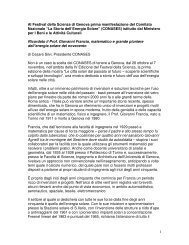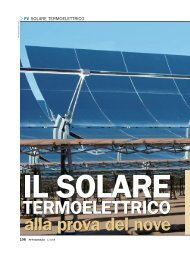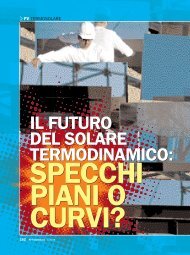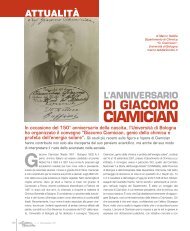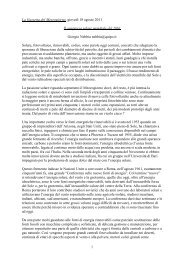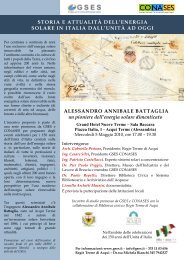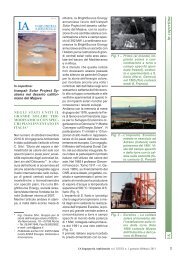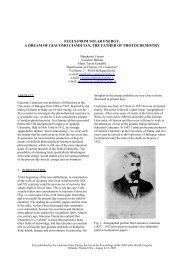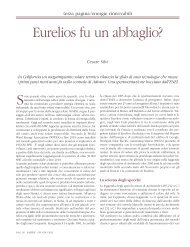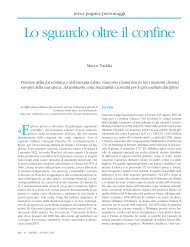The Pioneering Work On Linear Fresnel Reflector ... - GSES
The Pioneering Work On Linear Fresnel Reflector ... - GSES
The Pioneering Work On Linear Fresnel Reflector ... - GSES
Create successful ePaper yourself
Turn your PDF publications into a flip-book with our unique Google optimized e-Paper software.
He began working with the idea of collecting solar heat in order to obtain the high temperatures used in<br />
modern industries, such as to run large turbines at power plants. His first step toward raising the solar energy<br />
collection temperature was to invent the honeycomb structure, an array consisting of a large number of long,<br />
thin, parallel tubes made of glass, quartz or plastic. Being transparent to solar radiation but opaque to the heat<br />
rays emitted by the hot surface, the array served to reduce the collector's losses from re-irradiation and<br />
convection.<br />
Figure 5 shows the design for the first honeycomb system that Francia built in early 1960 for the sole purpose<br />
of testing the theory he was elaborating. In this case, the honeycomb was made up of hexagonal tubes 8 mm<br />
in diameter and 160 mm long. <strong>The</strong> device produced temperatures of 230-240°C, far lower than the 500°C<br />
expected theoretically. Between 1960 and 1961, Francia built the first experimental solar station at Cesana<br />
Torinese, coupling a boiler with a concentrator protected by a honeycomb structure made up of 2000 thin<br />
glass tubes. Francia’s experimental station succeeded in reaching the temperature of 600°C.<br />
Fig. 5. Left: first honeycomb absorber that Francia built in 1960; Right: Photos of the first boiler<br />
coupled with a concentrator and protected by a honeycomb structure tested in Cesana Torinese in<br />
1960/1961 (Francia Archive, Musil Brescia).<br />
He then translated his honeycomb structure, theory and experimental results into his first solar patent [12],<br />
which he presented at the United Nations Conference on New Energy Sources (solar, wind, geothermal), held<br />
in Rome at the headquarters of FAO, the U.N. Food and Agriculture Organization [13], where he gained<br />
international recognition. At this Congress he met Marcel Perrot (1908-2006) of the Solar Research Group at<br />
the University of Marseille (France), with whom he started a fruitful cooperation in solar energy.<br />
3.2 Francia and <strong>Linear</strong> <strong>Fresnel</strong> Concentrators (LFCs)<br />
Francia was the first person in the world to apply the <strong>Fresnel</strong> reflector concentrator concept in actual linear<br />
and point focus systems (LFCs and PFCs). He filed his first LFC patent in 1962, in Italy [14]. <strong>The</strong> next year,<br />
he designed and built the first LFC prototype, in Genoa, and in 1964 he assembled and tested it at the<br />
Lacédémone-Marseilles solar station, in cooperation with Marcel Perrot, and with support from France’s<br />
National Research Council (CNRS), NATO and COMPLES (Coopération Méditerranée pour l’Energie<br />
Solaire).<br />
Fig. 6. Left: drawing of the patented LFC; Right: Photos of Francia’s first LFC prototype (Francia<br />
Archive, Musil Brescia).<br />
As described in a note, this initial LFC unit was built by GRESUMG (Gruppo Ricerca Energia Solare<br />
Università Marsiglia Genova - Solar Energy Research Group, Marseilles and Genoa Universities) and stood




